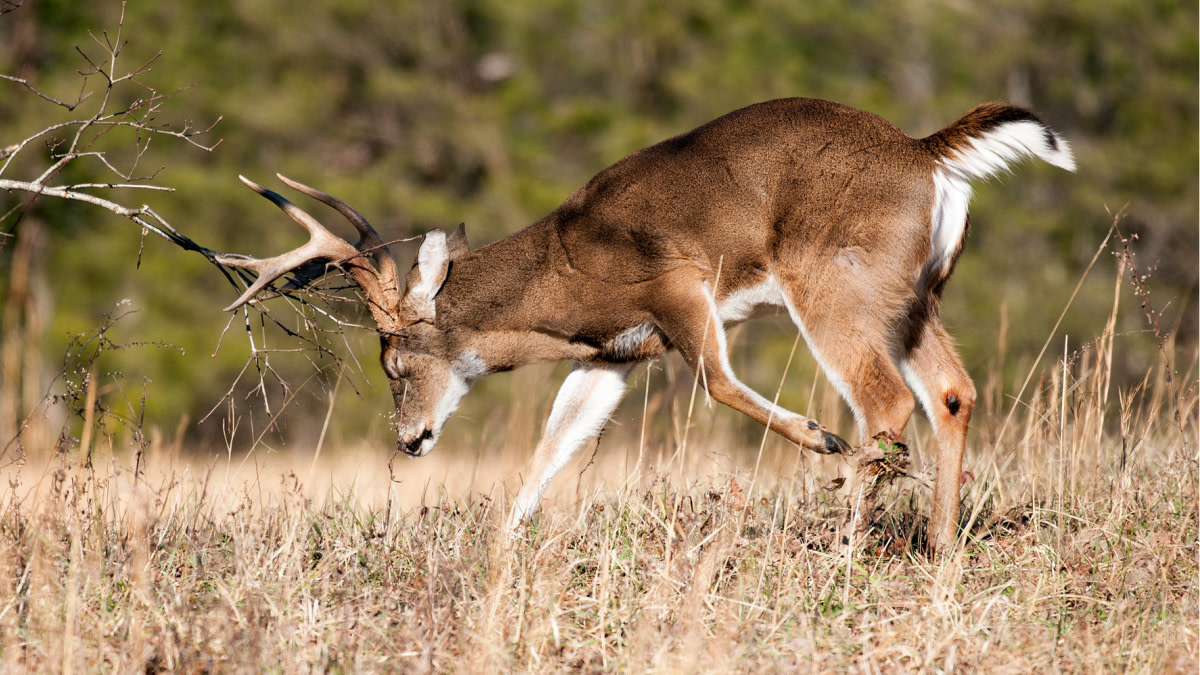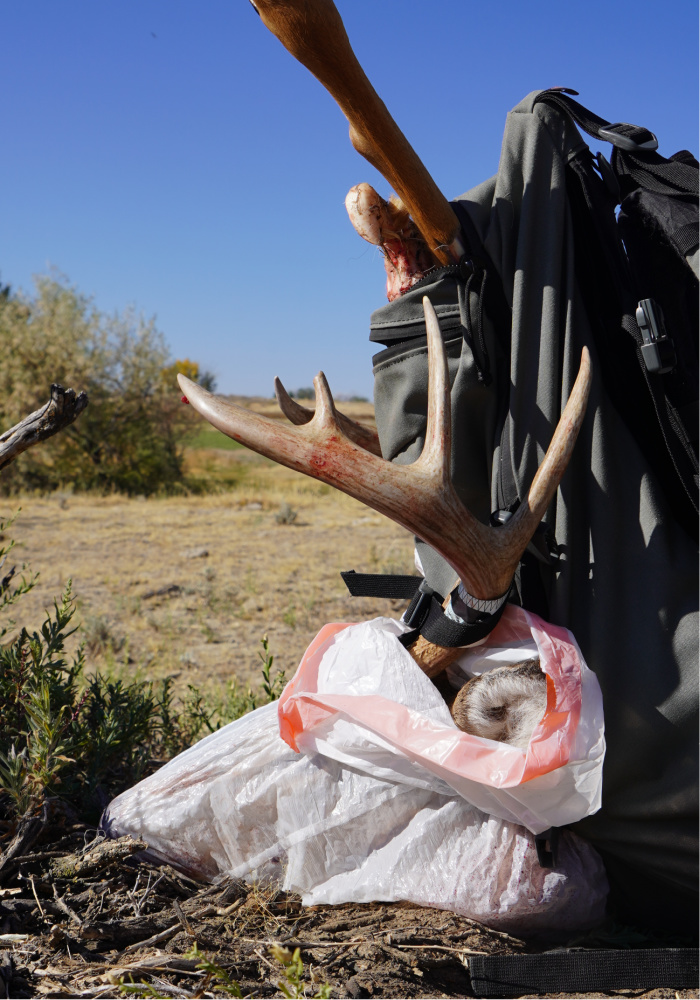
Every week this fall, I’ll be providing updates on whitetail buck movement for the entire country. These reports are based on intel from whitetailers in each region and my own observations as a traveling deer hunter. For more info like this, subscribe to the Rut Fresh Radio podcast and Whitetail Weekly newsletter. No one covers the rut like us.
The middle of October is arguably the toughest part of fall to kill a mature buck. A few weeks ago, whitetails were still predictable enough to catch them on a food-to-bed pattern similar to summer. A few weeks from now, bucks are going to start taking extended walkabouts to look for does coming into estrus early. So, where does that put them right now?
For the next 10 days or so, bucks will be doing most of their business under the cover of night and under the cover of cover. They’ll keep their movement nocturnal, and whatever time they do spend away from their bed during shooting hours will be in timber. This is the period most whitetailers refer to as the October Lull.
To beat the lull, you’ll need to leave the field edges and penetrate the woods. Look for secluded areas where there’s relevant buck sign. Rubs and scrapes on field edges are most likely only getting visits in the middle of the night. But rubs and scrapes in timber can be the first and last place a buck goes away from their bed. These clusters of big buck sign offer your best chance at a target deer in mid-October.
Cold fronts never hurt, either. A well-timed bout of cool weather can inspire bucks to move a little sooner in the evening or stick around an oak flat a little longer in the morning. Take advantage of a drop in temperatures during the lull whenever possible.
Here’s how each region breaks down for the coming week.
East
Most of the region has a perfectly-timed cold front moving in tomorrow. With a 40-degree drop in temperatures from Thursday’s high to Friday’s low, mature bucks are going to be on their feet. There’s also a good chance of rain for most of the East, which can act as an additional catalyst for deer movement. Check out Mark Kenyon’s article on hunting during precipitation for why many hunters welcome a storm.
To find daylight movement, look for fresh sign near natural food sources like acorns, fruits, and browse. Evening hunts are still going to be superior to morning hunts, but a sunrise kill can be achieved. To do so, you’ll need to get damn near their bedding area and arrive well before shooting light. This is a high-risk, high-reward move in mid-October.
South
The South has favorable weather on the way, but their cold fronts don’t resemble what you see in the rest of whitetail country. Southern lows are comparable to Northern highs on Friday, but that brief period of temps in the upper 40s will make deer move.
A lot of the region will be gusty over the next few days. While high wind doesn’t have much of a direct impact on deer movement, it will open up the flood gates for acorns hitting the ground. My contacts in the area said that the acorn crop has been minimal so far this year, but that is about to change. Before the wind moves through, look for deer hitting ag fields and natural browse, but after the storm, expect them to make a hard shift to acorns.

Midwest
I’m sorry to report that if you’re reading this, you’re probably missing the cold front. The drop in temps is happening from Wednesday to Friday, with the biggest swing in mercury on Thursday. That’s alright—there’s still good hunting to be had in the Heartland.
A big positive is that harvest is on schedule for most of the region. If you recall, last year combines were late getting into fields and it made for tough hunting from mid-October to early November. That won’t be the case this season. When harvest is taking place, expect for your property to lose deer or gain deer. You’ll notice new deer when nearby corn gets taken out or if you have a hot acorn crop. You’ll notice deer disappear if you had mature beans get cut or there’s a superior green food source on the neighbor’s property.
West
Like the Midwest, the best weather will likely be gone by the time you read this. The good news is that there isn’t really any negative weather in the forecast that will suppress deer movement. When you have a bout of stagnant temperatures like most of the region will experience, it can give you a chance to pattern bucks within that window. If you see them on a green food source on Friday, they’ll likely use it over the weekend and beyond.
This is how I killed a public land buck in Wyoming about a week ago. The consistent weather had a sizable herd using a field of alfalfa on the regular. I spotted a 10-pointer there on Saturday night, Monday morning, Monday evening, and one final time on Tuesday morning when I killed him. Had there been a 90-degree day or 20-degree day somewhere in there, the deer probably would have adjusted their feed schedule and left me in the dark.
Feature image via Matt Hansen.



